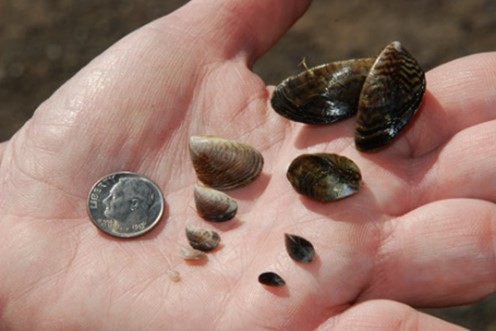
Quagga mussels (and Zebra mussels) were introduced into the Great Lakes from the Caspian Sea and Black Sea regions in the 1990s through ship ballast water. Since their introduction, they have spread by attaching to boat hulls, motors, and engine cooling intake lines or pipes, or by surviving as larvae in boats' water-holding areas. Quagga mussels are small and typically grow to the size of a fingernail. They are prolific breeders, and these mussels can attach to both hard and soft surfaces in freshwater ways.
This invasive species spread from the Great Lakes to Utah by “hitching” boat rides from lake to lake until, in 2013, Lake Powell became the first water body in Utah officially classified as “infested” with quagga mussels. The Utah Division of Wildlife Resources shifted efforts from trying to prevent the mussels from reaching the lake to “containment” tactics in hopes that the mussels will not spread from Lake Powell to other waterways.
The Problem: Quagga mussel invasions have had catastrophic impacts on the ecosystems where they have become established. These mussels outcompete native mussels and efficiently consume plankton, which deprives other aquatic species (including fish) of food. Further, these organisms accumulate on almost any available surface--clogging water intake structures (e.g., pipes and screens) and affecting municipal water supply, agricultural irrigation, power plant operations, and recreational activities.
Quagga Control Measures: The Utah Division of Wildlife Resources, with its partners at federal, state, and local levels, are working diligently to protect Utah's waters from invasive mussels. Central Utah Water Conservancy District (CUWCD) operates dams and water delivery systems which could be severely impacted by the spread of these invasive mussels. CUWCD continues to partner with the agencies responsible to stop the spread of mussels in Utah's waterways. Efforts include source water protection, agency coordination, funding for additional technicians to safeguard critical storage reservoirs, water quality monitoring, nutrient control, and education. Eventual infestation might be inevitable, but each year that these entities are successful at stopping this invasive spread into our critical storage reservoirs is a win.
For more information on how to help stop the spread of Quagga Mussels visit: Wildlife.Utah.Gov